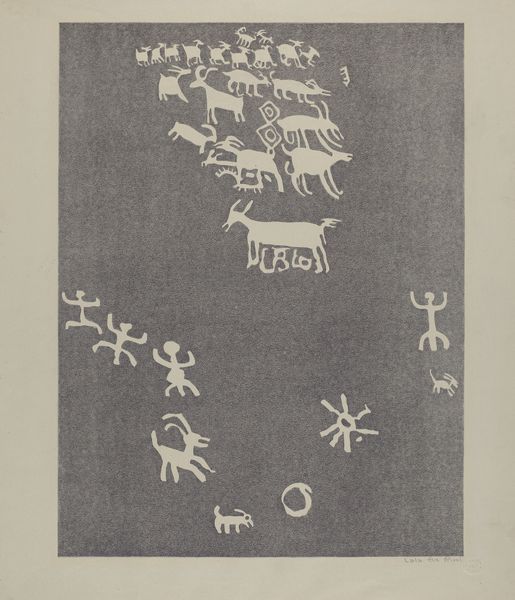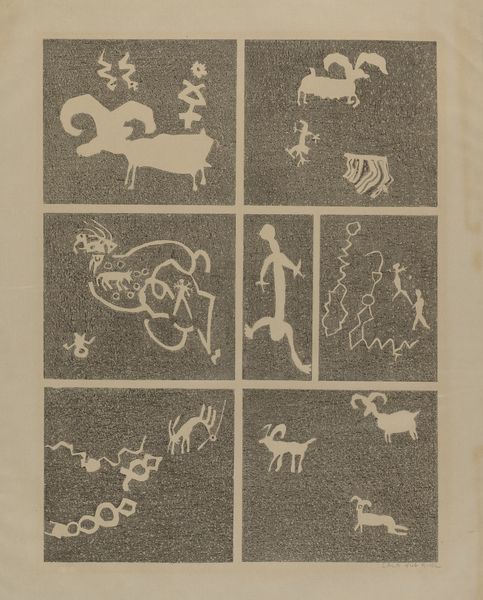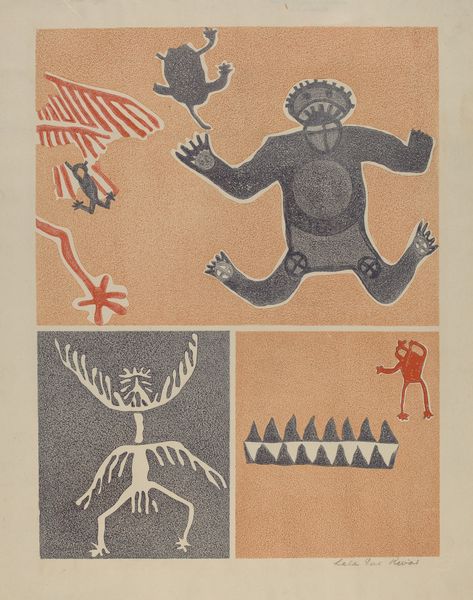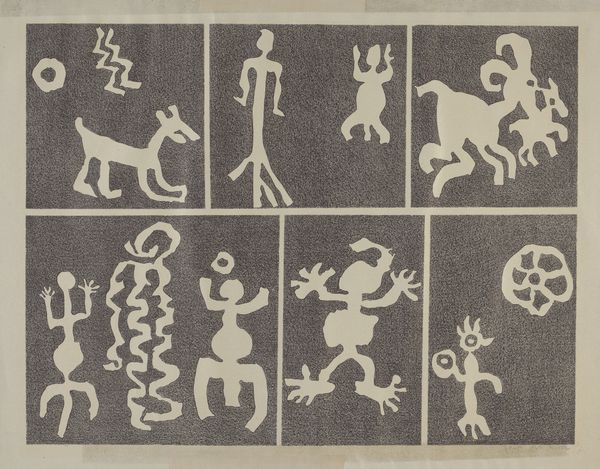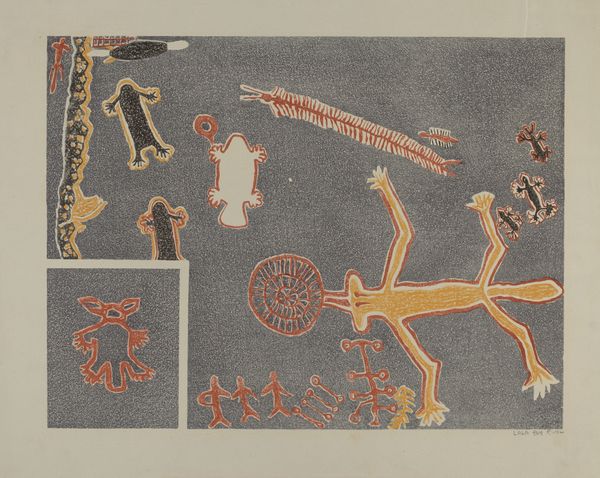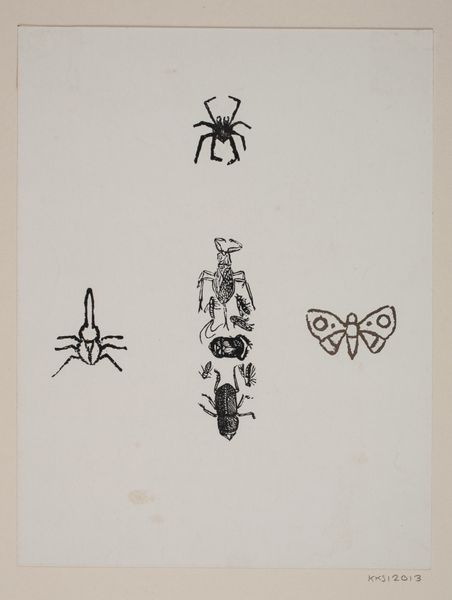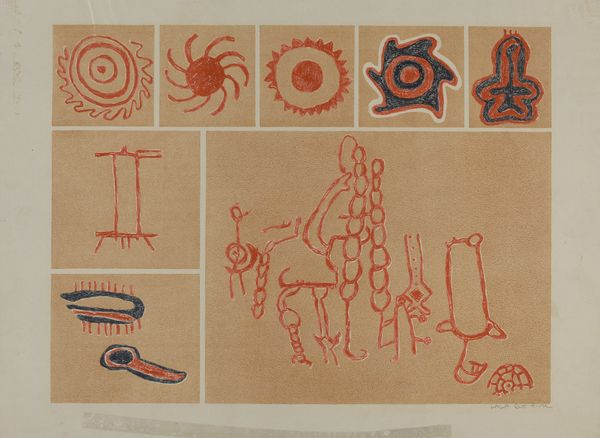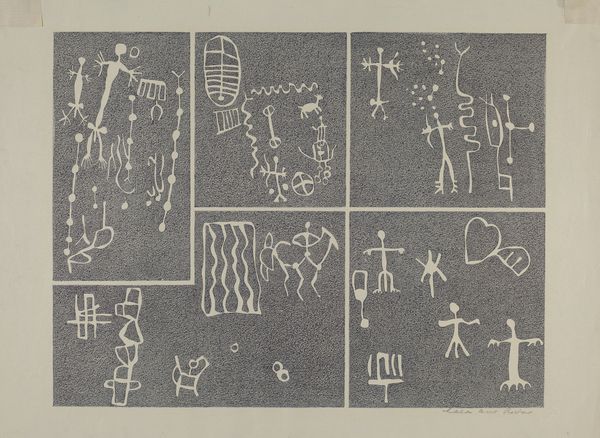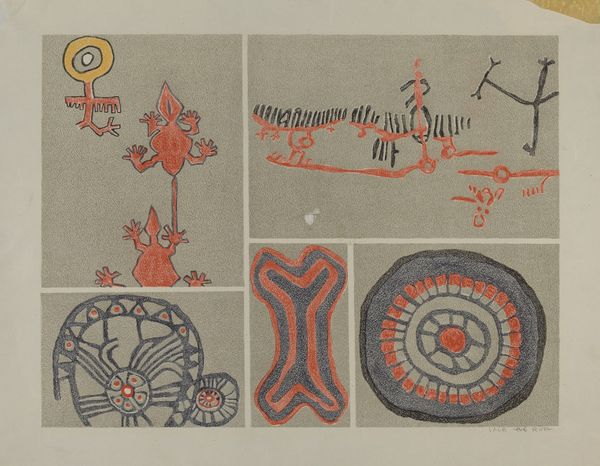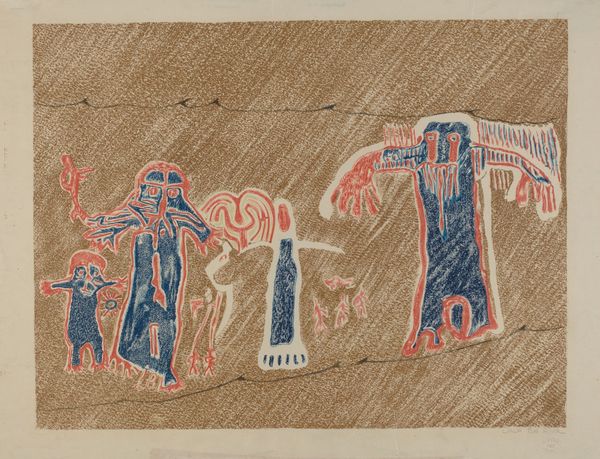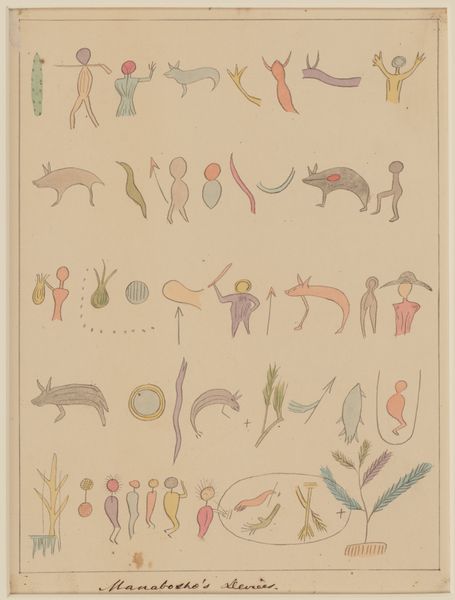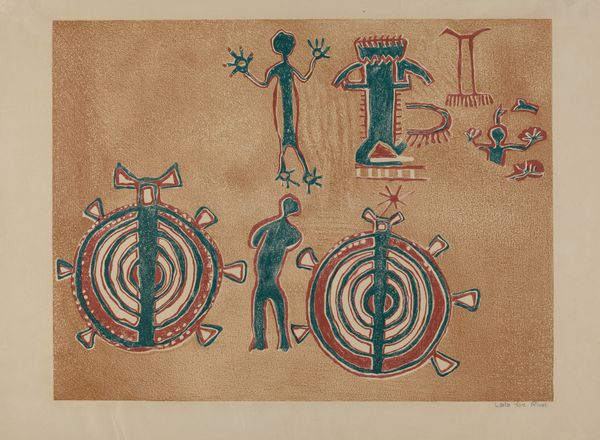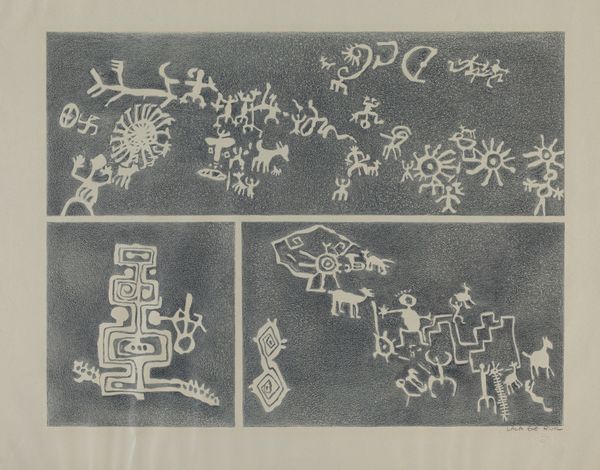
print, paper
#
water colours
# print
#
figuration
#
paper
#
line
Dimensions: Overall: 37.2 x 28.3 cm (14 5/8 x 11 1/8 in.) overall: 41.3 x 33.5 cm (16 1/4 x 13 3/16 in.)
Copyright: National Gallery of Art: CC0 1.0
Curator: I find myself immediately captivated by the arrangement. What jumps out to you about this series of watercolor and ink drawings entitled “Petroglyph” made by Lala Eve Rivol sometime between 1935 and 1942? Editor: Well, it looks like an intentional arrangement, the paper carefully divided to accommodate the forms and colors; however, my first impression stems from its textural presence. Look at the ground here—paper with watercolor seems to have been chosen specifically to replicate the textured look of stone. Curator: Precisely! The artist recreates Indigenous art traditions. These figurations pull from ancestral stories—note the geometric representation. What can be understood about humanity when translated into pure symbol? Rivol explores figurations here and engages with art from indigenous cultures. Editor: The materials offer insights into the means of production and context as well. The availability of watercolors and ink indicates a particular accessibility— perhaps situating this work within a specific economic framework that influenced its making? Even the choice of paper dictates how portable this is to its context, where the indigenous petroglyphs this drawing sources are immobile. Curator: An excellent point! Through the careful linear work here, and the indigenous symbolism, Rivol touches on a deep well of shared human experience that stretches across time. It presents a continuation, doesn't it? Editor: Continuity definitely stands out; this choice to translate a larger indigenous practice of drawing directly onto stone and instead producing it on portable paper demonstrates a continuation, but also an engagement with both high art and craft making, asking which material ultimately holds more value. Curator: Well, I can say, contemplating how ancient stories resonate across generations is a powerful feeling I take away from Rivol’s "Petroglyph." Editor: And I'm reminded of the power of accessible materials to evoke history and engage in complex conversations around value and context. Thank you for sharing that powerful moment, even for a brief instance!
Comments
No comments
Be the first to comment and join the conversation on the ultimate creative platform.
